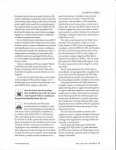romex jockey
Senior Member
- Location
- Vermont
- Occupation
- electrician
This is just part of the long standing AFCI fight between breaker and device manufactures. It was a bone tossed to the device manufacturers by breaker manufacturers.
The breaker manufacturers "stacked" the vote at the technical session that adopted the 2017 NEC to keep 210.12(A)(4)(d) in the code as part of this same fight. There is not even a standard to create the breaker required by that rule. The evidence shows that for the size and length of wire specified in (4) that the standard breaker provides sufficient protection for the branch circuit conductors and without the reference to this non-existent device, the breaker manufacturers fear that they would lose sales to the device manufactures. (by "stacked" I mean that there were almost twice as many NFPA members that voted on the motion on this issue as on any other motion)
I believe the key term is 'supplemental' w/in 210.12A3, A "listed supplemental arc protection circuit breaker" basically referes to the old non-combination afci ,prior to the '08 UL1966 change.
This was a term created by schnieder/seimens cmp2 reps who feared EC's would have had to return and/or trash a stockroom/van/jobsite of useless non-combo afci's
Or worse, suffer a recall of them
~RJ~




